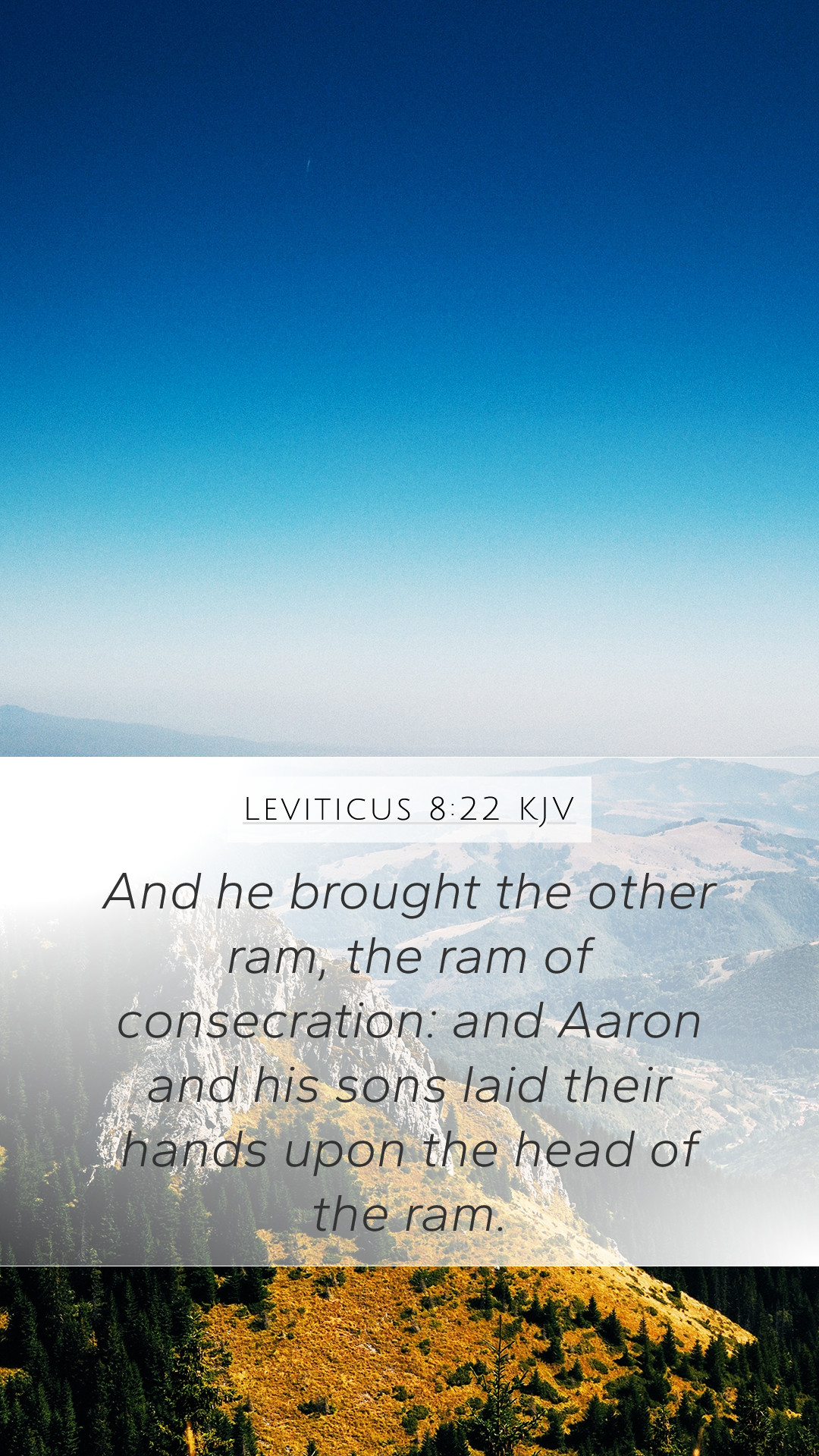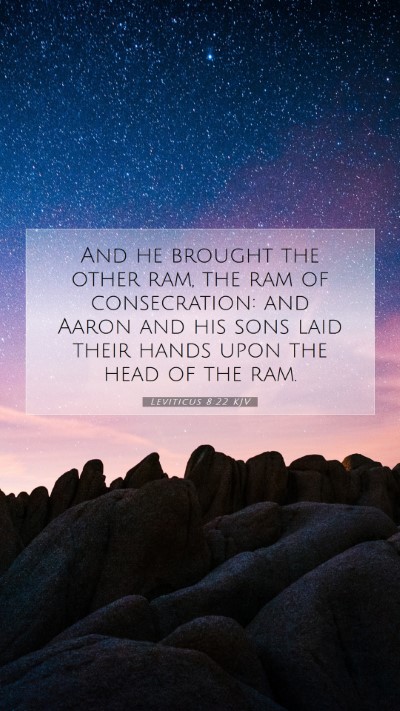Understanding Leviticus 8:22 - A Comprehensive Commentary
The verse Leviticus 8:22 presents the anointing of the second ram during the consecration of Aaron and his sons as priests. This verse reads:
"And he brought the second ram, the ram of consecration: and Aaron and his sons laid their hands upon the head of the ram."
Understanding this verse involves exploring its historical and spiritual significance within the context of the Old Testament sacrificial system.
Historical Context
The Book of Leviticus is part of the Pentateuch, which traditionally has been attributed to Moses. Leviticus lays out the laws and rituals that the Israelites were to follow as they established their covenant relationship with God. Aaron and his sons were chosen to serve as priests, mediating between God and the people.
The Significance of Consecration
Consecration refers to the act of making something sacred. In this instance, the ram of consecration symbolizes the complete dedication of the priests to the service of God. As highlighted in Matthew Henry's commentary, this event underscores the holiness required to serve as mediators of divine worship.
Insights from Commentaries
-
Matthew Henry:
Henry emphasizes the deep significance of the laying on of hands, as it represents the transfer of guilt and consecration of the sacrificial animal, symbolizing the priests' acceptance of their holy calling.
-
Albert Barnes:
Barnes notes that this act of laying hands on the ram signifies identification with the sacrifice, an important ritual in expressing the connection between the priests and the offering made to God.
-
Adam Clarke:
Clarke discusses the symbolism involved in the ram of consecration, representing the atonement and dedication required for those who would carry out priestly duties.
Biblical Exegesis and Theological Reflections
The theological implications of the priests' consecration extend beyond mere ritual. This dedication foreshadows the ultimate sacrifice of Jesus Christ, who would fulfill the roles of both priest and sacrificial lamb. The laying on of hands reflects a transfer of sin and consecration, which aligns with New Testament themes of redemption and atonement.
Application of Leviticus 8:22
This verse invites us to reflect on our own callings and the importance of dedicating ourselves to God’s service. Just as the priests were set apart for holy duties, Christians today are called to live lives that reflect their commitment to God. Our daily choices can serve as a form of consecration, dedicating our work, relationships, and actions to the Lord.
Cross References
- Exodus 29:22-28: Further instructions on the consecration of the priests.
- Leviticus 8:1-21: The broader context of Aaron's and his sons' consecration.
- Hebrews 5:1-4: Insights into the high priesthood and sacrifice under the new covenant.
Conclusion
In summary, Leviticus 8:22 captures a critical moment in the establishment of the Levitical priesthood, with deep implications for both historical understanding and present-day application. Through comprehensive Bible verse understanding, we gain insight into the qualities of holiness and service expected of those who seek to follow God faithfully. The verse invites believers to reflect profoundly on their own dedication to God’s work in the world.
Further Exploration
For those interested in bible study insights regarding the Old Testament and the significance of its rituals, exploring the themes of consecration, sacrifice, and priesthood in further detail can enrich your understanding of Scripture. Engaging in online Bible study or joining bible study groups can serve as valuable resources for delving deeper into these discussions.


